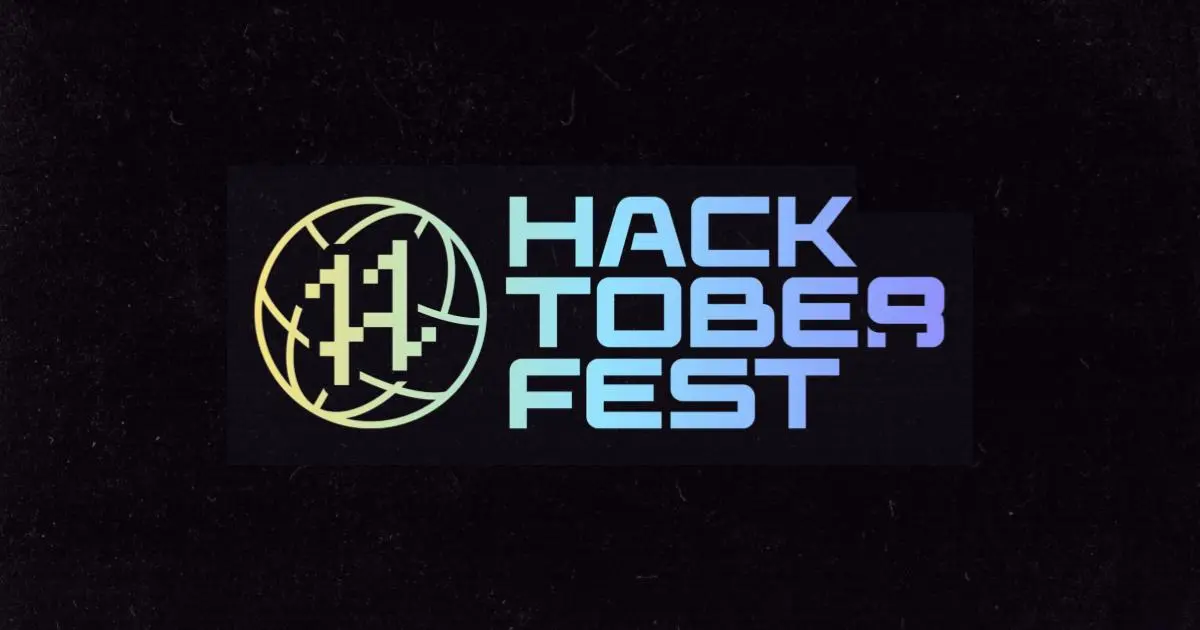How to Get Involved in Open Source During Hacktoberfest and Collect Great Swags
 Adarsh L K
Adarsh L K
Hacktoberfest is an annual event that promotes open-source contributions, offering participants the chance to earn exclusive swags and badges. It’s a fantastic opportunity for developers of all skill levels to engage with meaningful projects, enhance their portfolios, and become active members of the global open-source community.
1. What is Hacktoberfest?
Hacktoberfest, organized by DigitalOcean in collaboration with GitHub and other platforms, is a month-long celebration of open-source contributions. The main goal is to contribute at least four valid pull requests (PRs) to public GitHub repositories during October.
Rewards:
Swags: Participants who successfully complete 4 pull requests get limited-edition swags, such as t-shirts and stickers.
Badges: Digital badges are awarded for every valid PR, showing your open-source contribution journey.
2. Getting Started with Hacktoberfest
Step 1: Register for Hacktoberfest
Before starting, you need to register on the official Hacktoberfest website. This is crucial to track your progress and qualify for rewards.
Go to the website.
Click on "Start Hacking."
Sign up using your GitHub (or GitLab) account.
Step 2: Choose Projects to Contribute To
You can contribute to any open-source project hosted on GitHub (or GitLab). Look for repositories that are participating in Hacktoberfest or projects labeled with “hacktoberfest” “good first issue,” or “help wanted.”
Where to Find Projects:
GitHub's Hacktoberfest Topic: Check out Hacktoberfest to find repositories specifically participating in the event.
Explore Beginner-Friendly Issues: Search for labels like “good first issue” or “beginner-friendly” in repositories that align with your interests and skills.
3. How to Contribute to Open Source
Contributing to open source can seem intimidating, but it’s a straightforward process when broken down into steps.
Step 1: Fork the Repository
When you find a repository you want to contribute to, fork the repository to create a copy of it under your GitHub account. This lets you work on the project without affecting the original codebase.
Go to the repository page on GitHub.
Click the "Fork" button at the top-right of the page.
Step 2: Clone the Repository
After forking the repository, clone it to your local machine to make changes.
git clone https://github.com/YOUR_USERNAME/REPO_NAME.git
cd REPO_NAME
Step 3: Create a New Branch
Before making changes, create a new branch. This ensures your work is isolated and can be merged back into the main codebase later.
git checkout -b my-feature-branch
Step 4: Make Contributions
Now that you're in your own branch, make changes to the project. Your contribution could be anything:
Fixing bugs
Adding features
Improving documentation
Refactoring code
Writing tests
Step 5: Commit and Push Your Changes
Once your changes are made, commit them with a clear message, and push the changes to your forked repository.
git add .
git commit -m "Added feature X or Fixed bug Y"
git push origin my-feature-branch
Step 6: Create a Pull Request (PR)
Go back to the original repository and click the “New Pull Request” button. Select your branch and explain the changes you've made. Make sure to link any issues you’ve addressed.
The maintainers of the repository will review your pull request, and if everything looks good, they’ll merge your changes!
4. Tips for a Successful Hacktoberfest Contribution
1. Start with Documentation Contributions
If you're new to open-source development, contributing to documentation is a great way to start. This helps you understand the project and the contribution process without diving into complex code right away.
2. Look for Beginner-Friendly Issues
Search for issues labeled “good first issue” or “beginner-friendly.” These issues are designed for developers who are new to the project or open-source in general.
3. Follow the Project’s Contribution Guidelines
Each repository may have its own contribution guidelines. Be sure to follow these carefully to avoid having your pull request rejected.
4. Engage with the Community
Don’t hesitate to ask questions if you’re unsure about something. Engage with maintainers and other contributors by joining discussions, raising issues, or asking for clarification.
5. How to Ensure Your PR is Valid
To ensure your PR is valid and counts towards Hacktoberfest:
Make Meaningful Contributions: Small contributions, such as fixing typos or changing one line of code, may not count unless they are genuinely helpful.
Follow Repository Rules: Some repositories may reject PRs if they don’t meet their quality standards, so make sure you review their contribution guidelines.
Avoid Spammy PRs: Hacktoberfest encourages meaningful contributions. Spammy or low-quality PRs will be marked as invalid by maintainers, disqualifying them from counting towards your Hacktoberfest goal.
6. How to Track Your Progress
You can track your progress on the Hacktoberfest dashboard, which updates with every valid pull request you submit. After completing four valid PRs, you’ll qualify for the rewards.
7. Earn Swags & Badges
Once you successfully complete four valid pull requests, you’ll be eligible for the awesome Hacktoberfest swags and badges!
Swag Items Include:
Limited-edition t-shirts
Stickers
Special swag kits (depending on the sponsors)
Digital Badges:
- Each PR you make earns you a badge, which is displayed on your Hacktoberfest profile.
The earlier you finish your PRs, the better chance you have of securing swags, as supplies are often limited!
Get Involved & Happy Hacking! 🚀
Make sure to share your Hacktoberfest journey on social media, tag @Hacktoberfest, and showcase your contributions to inspire others!
Subscribe to my newsletter
Read articles from Adarsh L K directly inside your inbox. Subscribe to the newsletter, and don't miss out.
Written by

Adarsh L K
Adarsh L K
As a passionate Full Stack Developer, I specialize in building dynamic, scalable, and user-friendly web applications using the MERN stack. My journey has taken me through various technologies, including React, Node.js, Express, MongoDB, and more, where I've applied my skills in both front-end and back-end development to create efficient and robust software solutions.